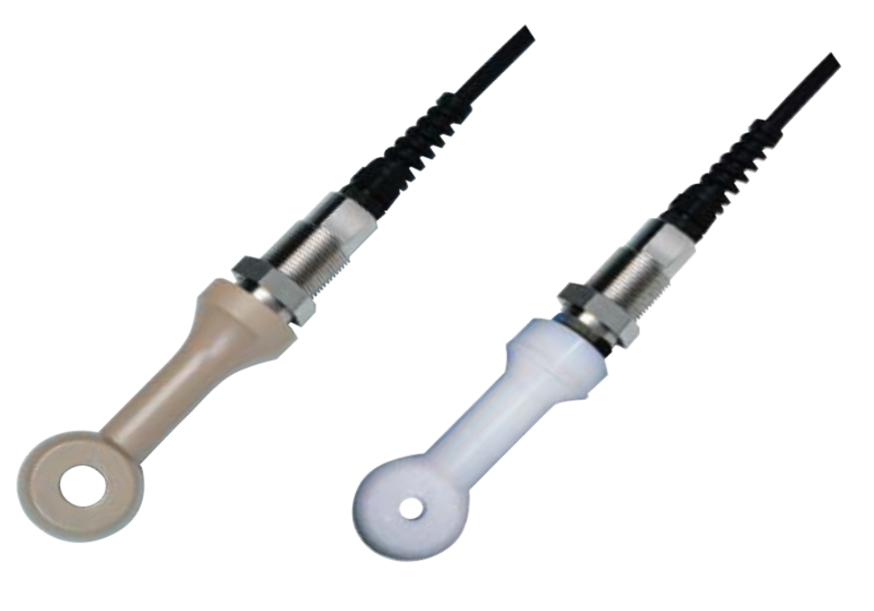
High Conductivity Sensors ISC40/SC42
2016-05-27 14:44:52
Description:
There are two basic sensor styles used for measuring Conductivity: Contacting and Inductive (Toroidal, Electrodeless). When Contacting Sensors are used, the conductivity is measured by applying an alternating electrical current to the sensor electrodes (that together make up the cell constant) immersed in a solution and measuring the resulting voltage. The solution acts as the electrical conductor between the sensor electrodes. With Inductive Conductivity (also called Toroidal or Electrodeless), the sensing elements (electrode coils) of an inductive sensor do not come in direct contact with the process. These two matched (identical) coils are encapsulated in PEEK (or Teflon) protecting them from the adverse effects of the process. There is only one cell factor (constant) for the ISC40 Inductive Sensor. It covers nearly the entire conductivity measurement range ~ 50-2,000,000 µS/cm. Only on the low end (below 50 µS) does the accuracy of the sensor suffer. Because the ISC40 Inductive sensor is virtually maintenance free; it is the first choice for any application. If the ISC40 cannot be used then it is recommended to use the 4-electrode design, model SC42 large bore sensor. ……
New Products
G.M. International D5015SK Intrinsically Safe Isolators - Analog Input
G.M. International D5015SK Intrinsically Safe Isolators - Analog Input. I.S. SIL2 2/4-Wire HART® Transmitter Power Supply.
G.M. International D5015SK Intrinsically Safe Isolators - Analog Input
G.M. International D5015SK Intrinsically Safe Isolators - Analog Input. I.S. SIL2 2/4-Wire HART® Transmitter Power Supply.
G.M. International D5015SK Intrinsically Safe Isolators - Analog Input
G.M. International D5015SK Intrinsically Safe Isolators - Analog Input. I.S. SIL2 2/4-Wire HART® Transmitter Power Supply.
G.M. International D5016DK Intrinsically Safe Isolators - Analog Input
G.M. International D5016DK Intrinsically Safe Isolators - Analog Input. I.S. SIL3 2-Wire Active HART® Tx Current Repeater.
Assortments
▶ Pressure Transmitter EJA
▶ Pressure Transmitters EJA-E
▶ Pressue Transmitter EJX
▶ Safety Instrumented System (SIS)
▶ Valve Positioners & Converters
▶ Field Mount Indicators
▶ Temperature Transmitters
▶ Magnetic Flowmeters
▶ Vortex Flowmeter
▶ Ultrasonic Flowmeters
▶ Coriolis Mass Flowmeters - ROTAMASS 3-Series
▶ Variable Area Flowmeters – Rotameters
▶ Device Smart Communicators
▶ PORTABLE AND HANDHELD INSTRUMENTS
▶ Distributed Control System (DCS)
▶ Process Analyzers
▶ Paperless Recorders
▶ Strip Chart Recorders
▶ Data Acquisition Equipment
▶ UT Series Temperature Controllers
▶ UP Series Program Controllers
▶ UM Series Digital Indicators with Alarms
▶ UT100 Series Temperature Controllers
▶ UD Series Manual Setters
▶ Limit Controllers
▶ YS Series Single-loop Controllers
Description
High Conductivity Sensors ISC40/SC42
There are two basic sensor styles used for measuring Conductivity: Contacting and Inductive (Toroidal, Electrodeless).
When Contacting Sensors are used, the conductivity is measured by applying an alternating electrical current to the sensor electrodes (that together make up the cell constant) immersed in a solution and measuring the resulting voltage. The solution acts as the electrical conductor between the sensor electrodes.
With Inductive Conductivity (also called Toroidal or Electrodeless), the sensing elements (electrode coils) of an inductive sensor do not come in direct contact with the process. These two matched (identical) coils are encapsulated in PEEK (or Teflon) protecting them from the adverse effects of the process.
There is only one cell factor (constant) for the ISC40 Inductive Sensor. It covers nearly the entire conductivity measurement range ~ 50-2,000,000 µS/cm. Only on the low end (below 50 µS) does the accuracy of the sensor suffer.
Because the ISC40 Inductive sensor is virtually maintenance free; it is the first choice for any application. If the ISC40 cannot be used then it is recommended to use the 4-electrode design, model SC42 large bore sensor.
| Model Code | ISC40 | SC42 Large Bore | ||
|---|---|---|---|---|
| Cell Constants | NA | NA | 10.0/cm | |
| Ranges | 1-2,00,000 µS/cm | 1-2,00,000 µS/cm | 20.0-2,00,000 µS/cm | |
| Temperature Element | Pt1000 or 30K Thermistor | Pt1000 or 30K Thermistor | Pt1000 | |
| Pressure Rating | Up to 20 bar/290 PSIG *Depending on installation* | 10 bar/142 PSIG @ 20°C/36°F; 5 bar/71 PSIG @ 100°C/212°F | 10 bar/142 PSIG | 2 bar/28.5 PSIG |
| Maximum Temperature | -20°C/-4°F to 130°C/266°F | -20°C/-4°F to 100°C/212°F | 110°C/230°F | |
| Installation Connections | Flange; Tri-Clamp; Flow Thru, NPT, Retractable | Flange; Tri-Clamp; Flow Thru, NPT, Retractable | Requires FD40, FS40 or FF40 Holder | |
| Integral Cable | YES | YES | NO | |
| Materials Of Construction | PEEK | PFA (Teflon) | EPOXY; PVDF (Kynar) | PTFE (Teflon) |
| Design Style | Inductive (Torodial or Electrodeless) | Inductive (Torodial or Electrodeless) | 4-Electrode | |
